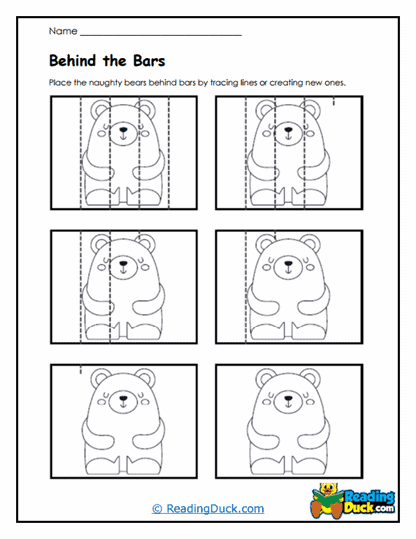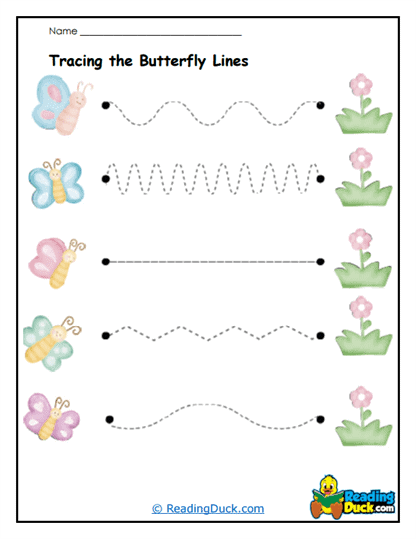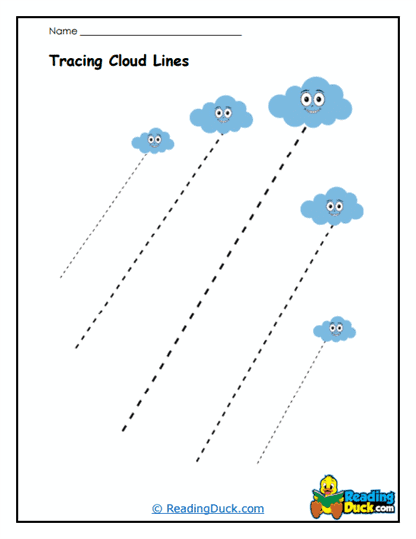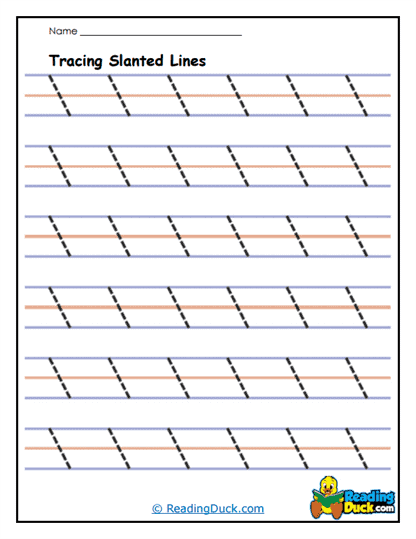Tracing Lines Worksheets
About Our Tracing Lines Worksheets
Our Tracing Lines Worksheets collection is designed to support young learners in pre-kindergarten through first grade as they develop essential fine motor skills and early writing abilities. These worksheets offer a variety of engaging activities that encourage students to trace all sorts of lines—straight, curved, wavy, slanted, and zigzag—helping them build the foundational skills necessary for writing.
The worksheets are creatively themed, featuring winter items, playful puppies connecting to their treats, and even dolphins meeting sailboats through wavy lines. These fun and educational worksheets are available in easy-to-download PDF format, making them an excellent resource for both classroom and homeschool settings.
What are Tracing Lines Worksheets?
Tracing Lines Worksheets are educational tools designed to help young children develop the ability to control their hand movements with precision and confidence. These worksheets focus on guiding students through tracing various types of lines, each of which is fundamental for mastering the strokes needed for writing letters and numbers. The activities within this collection are designed to be both enjoyable and educational, providing a mix of simple and creative exercises that cater to different learning styles.
Here’s what these worksheets typically include:
- Basic Line Tracing: These worksheets ask students to trace different types of lines—straight, curved, wavy, slanted, and zigzag. Each worksheet may focus on a single type of line or offer a variety of lines to practice, helping students improve their pencil control and hand-eye coordination.
- Themed Tracing Activities: Some worksheets add a layer of creativity by incorporating themes. For example, students might trace diagonal lines from clouds in a weather-themed worksheet or connect puppies to their treats using a variety of line types. These themed activities make tracing more engaging and relatable for young learners.
- Object and Path Tracing: In certain worksheets, students trace lines that connect objects or follow paths. Examples include tracing vertical lines to put bears behind bars or connecting wavy lines between dolphins and sailboats, butterflies and flowers, or similar flowers. These activities help students understand the concept of directionality and spatial relationships.
- Repetitive Line Tracing: Some worksheets focus on repetition, asking students to repeatedly trace various lines. This repetition helps solidify muscle memory, making it easier for students to develop the consistency and control needed for writing.
These worksheets provide a structured yet enjoyable way for young learners to practice and master the basic strokes required for writing, while also introducing them to creative themes and concepts.
How Educators Can Use Tracing Lines Worksheets in the Classroom
Tracing Lines Worksheets can be a valuable addition to any early childhood education curriculum, offering flexibility and creativity in how they are used. Whether in a school or homeschool setup, these worksheets can be incorporated into daily lessons or used as supplementary activities to enhance learning.
- Introducing Line Tracing: Educators can introduce these worksheets by starting with simple straight line tracing activities, allowing students to get comfortable with the basic movements required for writing. Once students have mastered straight lines, educators can gradually introduce more complex line types, such as curves, waves, and zigzags.
- Thematic Lessons: These worksheets can be integrated into broader thematic lessons. For example, during a winter-themed lesson, educators can use the winter items tracing worksheet to tie the activity into the season, making it more relevant and engaging for students. Similarly, a lesson on animals could include the puppy-themed tracing worksheet, adding a playful element to the learning experience.
- Interactive Group Activities: To make the learning process more interactive and collaborative, educators can turn tracing activities into group or partner exercises. For instance, students can work together to complete a worksheet, taking turns tracing different lines and discussing their strategies. This encourages teamwork and communication while making the activity more enjoyable.
- Supplementary Creative Exercises: Educators can add creative challenges to the worksheets to extend the learning experience. After completing a tracing activity, students could be asked to draw their own lines connecting different objects or to color the pictures they’ve traced, incorporating their pencil control skills into a broader creative task.
- Cross-Curricular Integration: These worksheets can be seamlessly integrated into other subjects. For instance, in a science lesson about weather, the cloud-themed tracing worksheet can be used to reinforce the concept while also providing fine motor practice. In art, students can use the worksheets as a warm-up before more complex drawing tasks, helping them refine their control before applying it to creative projects.
- Assessment and Progress Tracking: Educators can also use these worksheets as a tool for assessing and tracking students’ progress in developing fine motor skills. By regularly using the worksheets, teachers can observe improvements in students’ line tracing abilities and provide targeted feedback to help them advance.
The Importance of Developing Line Tracing Skills
The skills honed through Tracing Lines Worksheets are foundational for a child’s overall development, particularly in preparing them for writing and other academic tasks. Mastery of line tracing is not only crucial for writing but also for a variety of other activities that require fine motor control and coordination.
- Foundation for Writing: Tracing lines is a critical step in developing the fine motor skills and muscle memory needed for writing. By practicing different types of lines, children learn to control their pencil movements with precision, which is essential for forming letters and numbers accurately.
- Enhancing Fine Motor Skills: The repetitive motion of tracing lines helps strengthen the small muscles in the hands and fingers, which are necessary for writing, cutting, and other tasks that require fine motor coordination. These skills are essential for daily activities and contribute to a child’s independence and self-confidence.
- Supporting Cognitive Development: Tracing lines also supports cognitive development by encouraging children to think critically about directionality, patterns, and spatial relationships. As they trace lines from one point to another or connect objects, they develop an understanding of how different elements relate to each other in space, a skill that is important for math, science, and problem-solving.
- Building Focus and Attention: Completing line tracing worksheets requires concentration and attention to detail. These activities help children develop the ability to focus on a task and see it through to completion, skills that are vital for academic success. The discipline of tracing also fosters patience and persistence, as children learn that practice leads to improvement.
- Encouraging Creativity: While line tracing worksheets provide structured activities, they also offer opportunities for creativity. Themed worksheets, in particular, allow students to engage with the content in a fun and imaginative way, reinforcing their skills while also sparking their creativity.
By regularly practicing line tracing, young learners build a strong foundation that will support their academic journey and beyond. These skills not only prepare them for writing but also contribute to their overall cognitive and motor development, ensuring they are well-equipped to tackle more complex tasks as they progress in their education.
In summary, our Tracing Lines Worksheets collection is an invaluable resource for helping young learners develop the fine motor skills, hand-eye coordination, and cognitive abilities necessary for early academic success. Perfect for pre-kindergarten through first-grade students, these activities offer a wide range of tracing exercises that cater to different skill levels and learning styles.
Whether used as standalone activities or integrated into broader lesson plans, these worksheets provide a fun and effective way to build the foundational skills needed for writing and other precision tasks. By incorporating these worksheets into your teaching, you provide your students with the tools they need to succeed in their educational journey, ensuring they are prepared for the challenges ahead.









